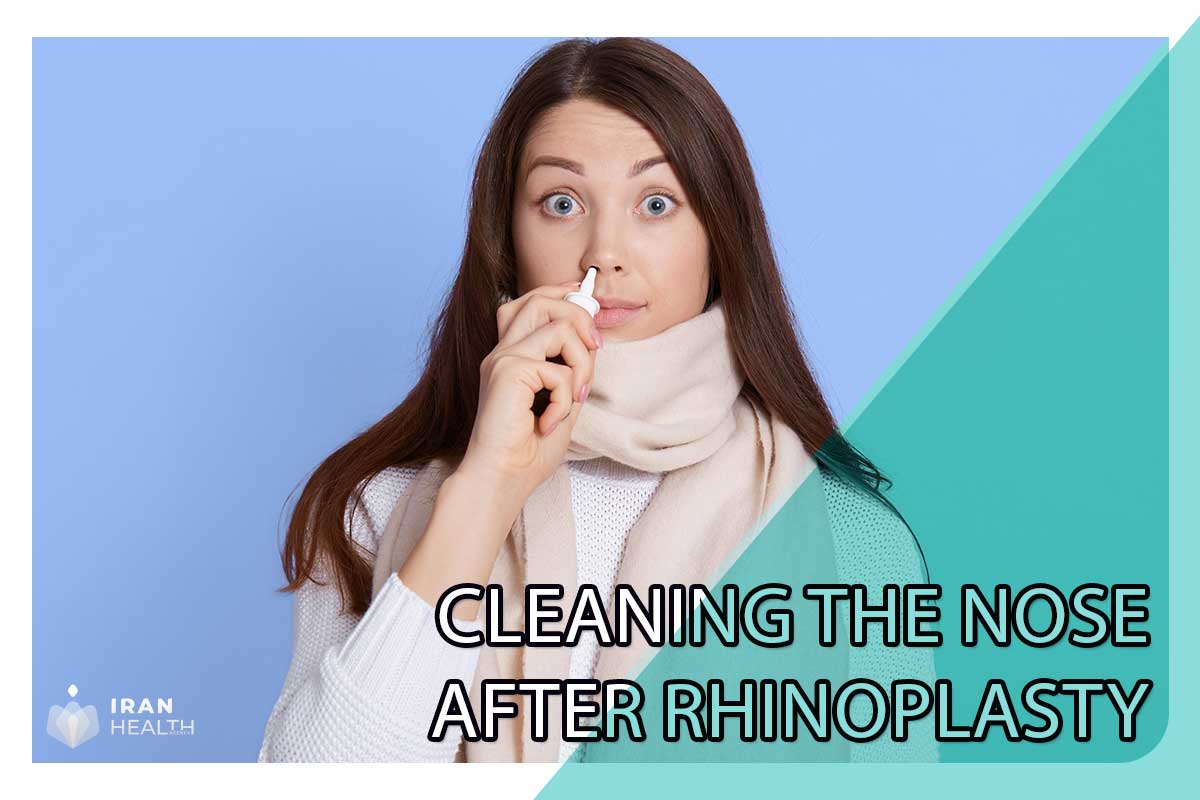Cleaning the nose after a rhinoplasty procedure requires special care and technique. After getting rhinoplasty surgery, there will be swelling, tenderness, and potentially stitches inside the nose that need time to heal. While keeping the nasal passages clean is important after rhinoplasty, aggressive blowing, rubbing, or scrubbing can disrupt delicate healing tissues.
Gentle daily cleansing in the weeks following rhinoplasty surgery can help remove crusting and prevent blockages without damaging the nose. This involves using saline sprays, hydrogen peroxide mixes, and cotton swabs to lightly dab and rinses the nostril openings.
Blowing the nose should be avoided for several weeks. When learning how to clean the nose after rhinoplasty properly, patients should follow post-op instructions closely to promote proper wound healing. With the right gentle cleansing routine, patients can keep their nose clean as it heals from rhinoplasty.
General Tips on How to Clean Nose After Rhinoplasty
Here are some general tips on how to properly clean your nose after a rhinoplasty procedure:
- Wait 48 hours after surgery before cleaning your nose. This allows the initial swelling and trauma to subside.
- Use a saline spray or rinse to gently flush away dried blood, mucus, or crusting inside the nostrils. Avoid harsh nose-blowing.
- Do saline rinses 2-3 times daily to keep nasal passages clean and moisturized as they heal.
- Cotton swabs can be used to wipe away drainage gently. But avoid inserting them deeply into the nostrils.
- Always clean your nose very gently after surgery. Never forcefully blow, rub, or scrub the area.
- When washing your face, avoid getting water inside your nostrils. Keep water away from nasal incisions.
- Apply antibiotic ointment and hydrating gels suggested by your surgeon to prevent drying and crusting.
- Avoid picking at scabs or dried blood. This can disrupt healing and cause infection.
- Follow any specific cleaning instructions provided by your plastic surgeon. They may advise using certain products.
- Contact your surgeon if you have thick nasal drainage, bleeding, or severe crusting that is difficult to clear.
- As healing progresses, you can resume your regular gentle cleansing routine. But avoid harsh soaps or scrubs on your nose.
Proper wound care and gentle cleaning are critical after rhinoplasty to prevent complications as you recover. Always follow your doctor’s post-op instructions closely.
Is it safe to clean the inside of my nose after a rhinoplasty procedure?
It can be safe to clean inside your nose after rhinoplasty gently, but special care needs to be taken not to disrupt the healing tissues. Here are some tips:
- For the first 5-7 days after surgery, avoid putting anything inside your nostrils or blowing your nose. Just let the nose rest.
- After the first week, you can begin gently rinsing the nostril openings (not deep inside) with saline spray or hydrogen peroxide mixed with water. Use cotton swabs to dab lightly, don’t scrub.
- Be very gentle. Do not forcefully blow your nose for 3-4 weeks after surgery. Let sneezes come out with your mouth open.
- After 3-4 weeks, you can start to blow your nose gently. Always use a saline spray to loosen mucus first.
- Avoid strenuous nose blowing, rubbing, picking, or digging, which could displace healing tissues.
- Ask your surgeon when to resume deeper nasal rinsing with a neti pot or irrigation system. This may be anywhere from 3-6 weeks post-op.
- Follow up with your surgeon promptly if you have any bleeding, increased swelling, pain or other concerns.
Cleaning the Outside of the Nose After Rhinoplasty
- Use a gentle cleanser and lukewarm water to clean the outside of your nose and nostrils. Avoid harsh soaps.
- Do not rub or scrub the nose. Instead, lightly dab it with a soft cloth to prevent irritation.
- Avoid applying creams or ointments to your nose without consulting your surgeon first.
- Protect your nose from sun exposure to prevent further swelling and irritation.
- Follow any additional care instructions from your surgeon on keeping the exterior nose clean as it heals.
- See your surgeon promptly if you notice increased pain, swelling, redness, or drainage.



